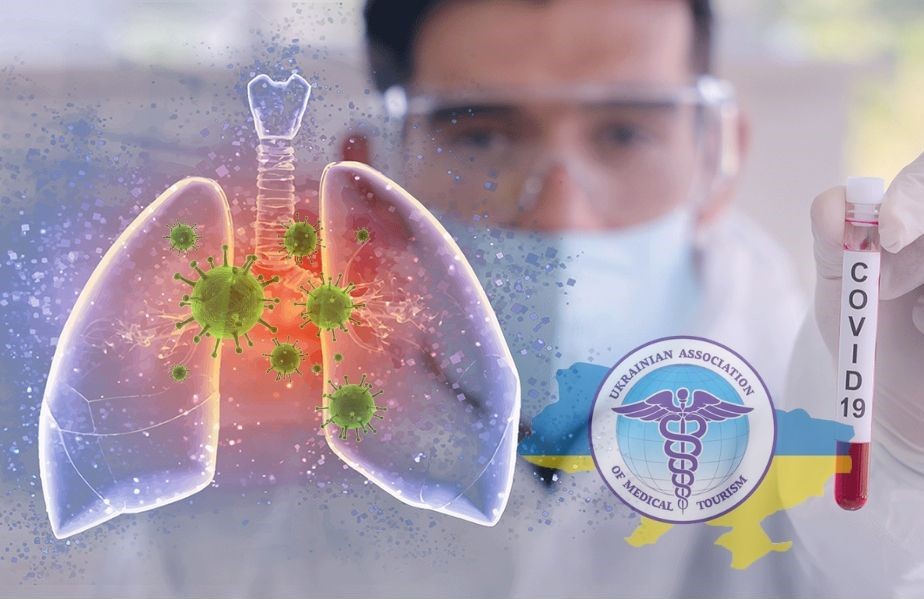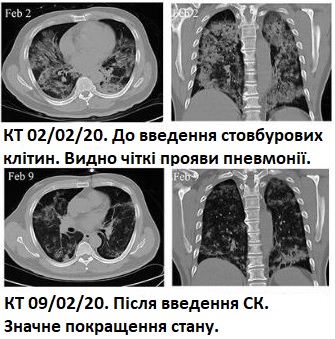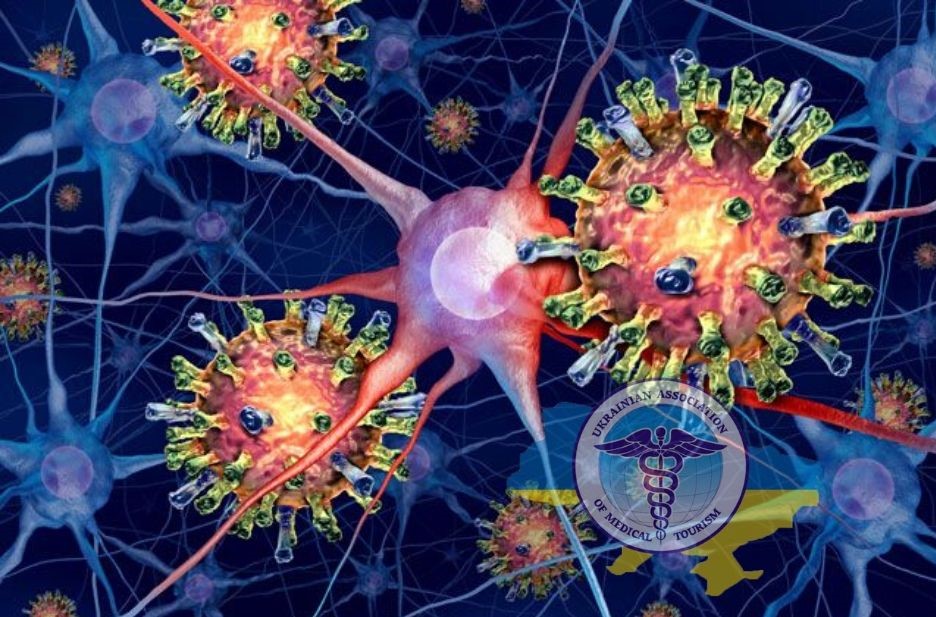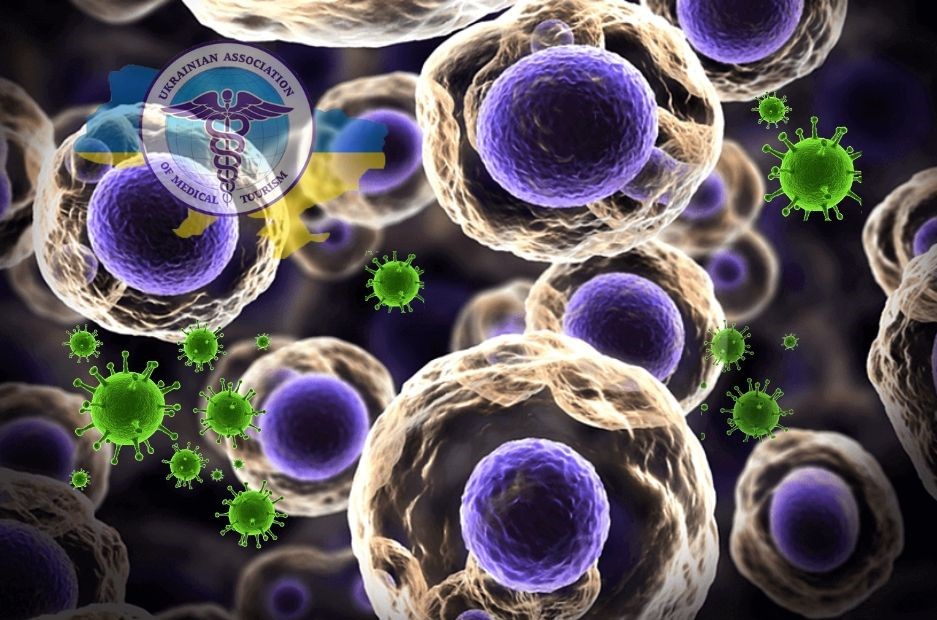The usage of stem cells for the prevention and treatment of viral infections.
A new strain of viral infection - the coronavirus COVID-19 has stirred up the whole world. It will take months to develop a vaccine against a viral disease, but it is necessary to save thousands of patients today. The search for effective methods for the prevention and treatment of viral infections, in particular respiratory viral infection and the COVID-19 virus, has led scientists to use a successful innovative treatment method, which is now used in the treatment of about 100 different serious diseases.
Stem cells in the treatment of coronavirus. What do the studies say?

Chinese doctors and scientists have become known worldwide for the effective development and implementation of new cellular technologies in the fight against coronavirus. Clinical studies had to be carried out in a pandemic, where every day thousands of patients were affected by a new aggressive strain of the virus. After all, China was the first to encounter a coronavirus. Over hundreds of patients with COVID-19 have been injected with mesenchymal stem cells (MSCs) at a hospital in Beijing to help patients cure the disease. Experimental treatment is part of many clinical studies on the use of stem cells in medical practice, which showed early prospects in the treatment of severe viral infections, and hence the COVID-19 virus.
The result of Stem Cells treatment of coronavirus infection complications.

A 65-year-old woman, in serious clinical condition, who had been struggling with the disease for almost two weeks after stem cell therapy, only four days after receiving the injection reported an improvement and was able to walk again. As seen on computed tomography, focuses of inflammation in the lungs disappeared as a result of treatment with stem cells. Also, there was a significant improvement in physiological parameters and the patient was discharged from the ICU.
In the following seven patients suffering from severe symptoms of coronavirus, including fever and shortness of breath, all symptoms disappeared after four days without any side effects. Three of these patients were discharged 10 days after stem cell treatment for the viral infection. Researchers at this project called these results "encouraging and exciting."
What is the mechanism of action of stem cell therapy in viral infections?

Depending on what tasks stem cells perform, they are divided into the following categories:
- Hematopoietic cells: used in the transplantation of blood diseases
- Tissue-specific stem cells: used if necessary to restore the cell mass of an organ or tissue
- Mesenchymal cells: have the ability to change into cells of cartilage, adipose and bone tissue.
In severe cases of a viral infection, Chinese specialists introduced to their patients precisely mesenchymal stem cells (MSCs) - non-specialized cells that are known for their anti-inflammatory and immunoregulable properties. An assumption that needed to be checked: “Will stem cells significantly improve the body’s immune response, reduce inflammatory manifestations in the lungs and reduce the risk of respiratory failure?”
Worth to understand! The umbilical cord mesenchymal stem cell (MSC) therapy does not fight against coronavirus, it is used as a treatment and prevention of any types of viral infections. Of course, this includes all acute respiratory viral infections, seasonal influenza virus, viruses that can lead to SARS syndrome, including Covid-19. Studies are underway to treat other viral infections with stem cells, including severe ones such as HIV infection that causes AIDS (acquired human immunodeficiency syndrome). Stem cells are necessary for the preparation and mobilization of all body systems to fight viral infections and overall immunity.
Stem Cell Treatment "Cytokine Storm"

Often, in the case of a severe course of a viral infection, the cause of the deterioration of the patient’s condition, which can even lead to death, is the development of a systemic inflammatory response syndrome - “cytokine storm” or “cytokine cascade”. This is an incorrect and uncontrolled reaction of the immune system during infection, which leads to the destruction of tissues in the area of inflammation, and then the systemic effect on the whole body, which can cause the death of the patient. In the case of an infection caused by coronavirus, inflammation develops in the lungs, which means that in severe cases of the disease, serious lung damage and respiratory and gas exchange disorders develop. But there is a way out: as the study shows, cell therapy of viral infections with stem cells can stop the uncontrolled reaction of the body's immune system due to the unique anti-inflammatory properties of stem cells. Also important is the ability of stem cells to activate the repair and regeneration of damaged tissue. In addition to treatment during the viral infection itself, stem cells are also actively used in the treatment of the consequences and complications of infection.
The use of stem cell treatment methods in Ukraine
Important! Ukraine is among the world leaders in the effective clinical implementation of stem cell treatment techniques. Hundreds of tourists annually travel to Ukraine to treat a wide range of diseases using cellular technology. Today in Ukraine, cell therapy allows treating patients with impaired reproductive function, diabetes mellitus, neurological diseases, heart diseases and many others. In the treatment of stem cells, Ukrainian specialists use different routes of administration, depending on the tasks:
- The introduction of stem cells is used for systemic diseases, for example, diseases of metabolic disorders, for example, diabetes;
- In the treatment of viral infections, this method of administration is predominantly used;
- Stem cell transplantation directly into the affected organ;
- Endoluminal stem cell injection is the introduction into the spinal canal, usually with diseases of the nervous system;
- Internal articular stem cell administration is used for joint diseases;
- Others.
The cost of stem cell treatment in Ukraine
The cost is individual and depends on the therapeutic amount of stem cells, which is indicative of a particular disease. Of course, it is not cheap due to the need to use expensive biotechnological equipment and laboratories, but lower than in European countries, the USA and China. At the same time, the quality of treatment corresponds to foreign, and in many cases there are unique technologies for treating patients who have no analogues in other countries.


